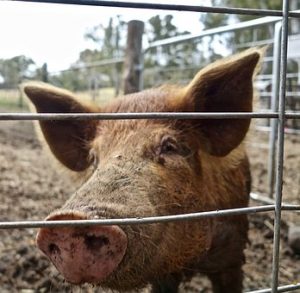03 March 2019
DE FAAKTO OUTBREAK INTELLIGENCE
UPDATE
SITUATION-INDIA H1N1 SWINE FLU VIRUS OUTBREAK
Hindustan Times India is reporting via National Center for Disease Control India,
- H1N1 Swine Flu Epidemic Proportions in India
- 14 803 people infected with H1N1 Swine Flu
- 448 deaths from H1N1 Swine Flu
H1N1 Swine Flu Epidemic by Year India
2019
- 14 808 people infected with H1N1
- 448 deaths from H1N1
2018
- 14992 people infected with H1N1
- 1103 deaths from H1N1
2017
- 38811 people infected with H1N1
- 2270 deaths from H1N1
2016
- 1786 People infected with H1N1
- 265 deaths from H1N1
2015
- 42 592 People infected with H1N1
- 2990 deaths from H1N1
- There are no new reports from the World Health Organization or the U.S. Center for Disease Control regarding H1N1 Swine Flu outbreak in India at this time
- Outbreak information can only be corroborated with local news media outlets
What is Swine Flu?
- Swine influenza (swine flu) is a respiratory disease of pigs caused by type A influenza viruses that regularly cause outbreaks of influenza in pigs (CDC, 2019)
Can humans be infected with swine influenza viruses?
- Yes.Swine flu viruses do not normally infect humans, however, sporadic human infections with influenza viruses that normally infect swine have occurred
- When this happens, these viruses are called “variant viruses”
- Human infections with variant viruses have occurred in people exposed to infected pigs
- There have been documented cases of multiple persons becoming sick after exposure to one or more sick pigs
- Also, cases of limited person-to-person spread of variant viruses have occurred (CDC, 2019)
Signs and symptoms in humans
- Swine and other zoonotic influenza infections in humans may cause disease ranging from,
- mild upper respiratory infection (fever and cough)
- Rapid progression to severe pneumonia, acute respiratory distress syndrome, shock and even death (WHO, 2019)
Treatment
- Evidence suggests that some antiviral drugs, notably neuraminidase inhibitor (oseltamivir, zanamivir), can reduce the duration of viral replication and improve prospects of survival, however ongoing clinical studies are needed (WHO, 2019)
Prevention
- Apart from antiviral treatment, the public health management includes personal protective measures like:
- Regular hand washing with proper drying of the hands
- Good respiratory hygiene – covering mouth and nose when coughing or sneezing, using tissues and disposing of them correctly
- Early self-isolation of those feeling unwell, feverish and having other symptoms of influenza
- Avoiding close contact with sick people
- Avoiding touching one’s eyes, nose or mouth
- Health care workers preforming aerosol generating procedures should use airborne precautions. Standard contact and droplet precautions and appropriate personal protective equipment (PPE) should be made available and used during epidemics (WHO, 2019)
CDC https://www.cdc.gov/flu/swineflu/keyfacts-variant.htm
WHO https://www.who.int/en/news-room/fact-sheets/detail/influenza-(avian-and-other-zoonotic)
Hindustan Times https://www.hindustantimes.com/india-news/north-india-may-record-15-000-swine-flu-cases-by-february-end/story-wBdm5n3KsLekzwLu7jhhfI.html
________________________________________________________________________________________
24 FEBRUARY 2019
DE FAAKTO OUTBREAK INTELLIGENCE
UPDATE
SITUATION-INDIA H1N1 SWINE FLU VIRUS OUTBREAK
NEWSclick Science India is reporting via Union Health Ministry India,
- H1N1 Swine Flu Epidemic Proportions in India
- 12000 people infected with H1N1 Swine Flu
- 377 deaths from H1N1 Swine Flu
- There are no new reports from the World Health Organization or the U.S. Center for Disease Control regarding H1N1 Swine Flu outbreak in India at this time
- Outbreak information can only be corroborated with local news media outlets
What is Swine Flu?
- Swine influenza (swine flu) is a respiratory disease of pigs caused by type A influenza viruses that regularly cause outbreaks of influenza in pigs (CDC, 2019)
Can humans be infected with swine influenza viruses?
- Yes.Swine flu viruses do not normally infect humans, however, sporadic human infections with influenza viruses that normally infect swine have occurred
- When this happens, these viruses are called “variant viruses”
- Human infections with variant viruses have occurred in people exposed to infected pigs
- There have been documented cases of multiple persons becoming sick after exposure to one or more sick pigs
- Also, cases of limited person-to-person spread of variant viruses have occurred (CDC, 2019)
Signs and symptoms in humans
- Swine and other zoonotic influenza infections in humans may cause disease ranging from,
- mild upper respiratory infection (fever and cough)
- Rapid progression to severe pneumonia, acute respiratory distress syndrome, shock and even death (WHO, 2019)
Treatment
- Evidence suggests that some antiviral drugs, notably neuraminidase inhibitor (oseltamivir, zanamivir), can reduce the duration of viral replication and improve prospects of survival, however ongoing clinical studies are needed (WHO, 2019)
Prevention
- Apart from antiviral treatment, the public health management includes personal protective measures like:
- Regular hand washing with proper drying of the hands
- Good respiratory hygiene – covering mouth and nose when coughing or sneezing, using tissues and disposing of them correctly
- Early self-isolation of those feeling unwell, feverish and having other symptoms of influenza
- Avoiding close contact with sick people
- Avoiding touching one’s eyes, nose or mouth
- Health care workers preforming aerosol generating procedures should use airborne precautions. Standard contact and droplet precautions and appropriate personal protective equipment (PPE) should be made available and used during epidemics (WHO, 2019)
CDC https://www.cdc.gov/flu/swineflu/keyfacts-variant.htm
WHO https://www.who.int/en/news-room/fact-sheets/detail/influenza-(avian-and-other-zoonotic)
NEWSclick India https://www.newsclick.in/swine-flu-hits-epidemic-proportions-india
________________________________________________________________________________________
18 FEBRUARY 2019
DE FAAKTO OUTBREAK INTELLIGENCE
UPDATE
INDIA-H1N1 SWINE FLU VIRUS
Team Lastly News India is Reporting Via-Union Health Ministry
- 332 deaths from H1N1 Swine Flu
- 9000 people infected with H1N1 Swine Flu
- There are no new reports from the World Health Organization or the U.S. Center for Disease Control regarding H1N1 Swine Flu outbreak in India at this time
- Outbreak information can only be corroborated with local news media outlets
What is Swine Flu?
- Swine influenza (swine flu) is a respiratory disease of pigs caused by type A influenza viruses that regularly cause outbreaks of influenza in pigs (CDC, 2019)
Can humans be infected with swine influenza viruses?
- Yes.Swine flu viruses do not normally infect humans, however, sporadic human infections with influenza viruses that normally infect swine have occurred
- When this happens, these viruses are called “variant viruses”
- Human infections with variant viruses have occurred in people exposed to infected pigs
- There have been documented cases of multiple persons becoming sick after exposure to one or more sick pigs
- Also, cases of limited person-to-person spread of variant viruses have occurred (CDC, 2019)
Signs and symptoms in humans
- Swine and other zoonotic influenza infections in humans may cause disease ranging from,
- mild upper respiratory infection (fever and cough)
- Rapid progression to severe pneumonia, acute respiratory distress syndrome, shock and even death (WHO, 2019)
Treatment
- Evidence suggests that some antiviral drugs, notably neuraminidase inhibitor (oseltamivir, zanamivir), can reduce the duration of viral replication and improve prospects of survival, however ongoing clinical studies are needed (WHO, 2019)
Prevention
- Apart from antiviral treatment, the public health management includes personal protective measures like:
- Regular hand washing with proper drying of the hands
- Good respiratory hygiene – covering mouth and nose when coughing or sneezing, using tissues and disposing of them correctly
- Early self-isolation of those feeling unwell, feverish and having other symptoms of influenza
- Avoiding close contact with sick people
- Avoiding touching one’s eyes, nose or mouth
- Health care workers preforming aerosol generating procedures should use airborne precautions. Standard contact and droplet precautions and appropriate personal protective equipment (PPE) should be made available and used during epidemics (WHO, 2019)
CDC https://www.cdc.gov/flu/swineflu/keyfacts-variant.htm
WHO https://www.who.int/en/news-room/fact-sheets/detail/influenza-(avian-and-other-zoonotic)
Team Lastly India https://www.latestly.com/india/news/swine-flu-deaths-in-2019-h1n1-virus-claims-over-330-lives-across-india-127-killed-in-rajasthan-alone-649343.html
________________________________________________________________________________________
04 February 2019
DE FAAKTO OUTBREAK INTELLIGENCE

OUTBREAK INTELLIGENCE
H1N1 SWINE FLU
THE INDIAN EXPRESS REPORTS-Union health ministry data
- 6601 tested positive for H1N1 Swine Flu
- 226 deaths reported
- 2030 tested positive in last 7 days
The health ministry has asked the states to,
- Bolster their surveillance for early detection of the disease and also
- Keep beds reserved in hospitals to deal with acute cases which require ventilator facility
- There are no new reports from the World Health Organization or the U.S. Center for Disease Control regarding H1N1 Swine Flu outbreak in India at this time
- Outbreak information can only be corroborated with other local news media outlets
What is Swine Flu?
- Swine influenza (swine flu) is a respiratory disease of pigs caused by type A influenza viruses that regularly cause outbreaks of influenza in pigs (CDC, 2019)
Can humans be infected with swine influenza viruses?
- Yes.Swine flu viruses do not normally infect humans, however, sporadic human infections with influenza viruses that normally infect swine have occurred
- When this happens, these viruses are called “variant viruses”
- Human infections with variant viruses have occurred in people exposed to infected pigs
- There have been documented cases of multiple persons becoming sick after exposure to one or more sick pigs
- Also, cases of limited person-to-person spread of variant viruses have occurred (CDC, 2019)
Signs and symptoms in humans
- Swine and other zoonotic influenza infections in humans may cause disease ranging from,
- mild upper respiratory infection (fever and cough)
- Rapid progression to severe pneumonia, acute respiratory distress syndrome, shock and even death (WHO, 2019)
Treatment
- Evidence suggests that some antiviral drugs, notably neuraminidase inhibitor (oseltamivir, zanamivir), can reduce the duration of viral replication and improve prospects of survival, however ongoing clinical studies are needed (WHO, 2019)
Prevention
- Apart from antiviral treatment, the public health management includes personal protective measures like:
- Regular hand washing with proper drying of the hands
- Good respiratory hygiene – covering mouth and nose when coughing or sneezing, using tissues and disposing of them correctly
- Early self-isolation of those feeling unwell, feverish and having other symptoms of influenza
- Avoiding close contact with sick people
- Avoiding touching one’s eyes, nose or mouth
- Health care workers preforming aerosol generating procedures should use airborne precautions. Standard contact and droplet precautions and appropriate personal protective equipment (PPE) should be made available and used during epidemics (WHO, 2019)
CDC https://www.cdc.gov/flu/swineflu/keyfacts-variant.htm
WHO https://www.who.int/en/news-room/fact-sheets/detail/influenza-(avian-and-other-zoonotic)
The Indian Express https://indianexpress.com/article/india/swine-flu-death-toll-h1n1-virus-health-ministry-5569076/
_________________________________________________________________________________________
25 January 2019
UPDATE H1N1 SWINE FLU-INDIA
Quartz News is Reporting,
- Swine flu has already killed at least 77 Indians in the first few weeks of 2019
- 2,572 cases of swine flu were recorded across India and at least 77 people have died, as of Jan. 24
- The website of the National Centre for Disease Control shows that 49 people died within the first two weeks of the year
- There are no new reports from the World Health Organization or the U.S. Center for Disease Control regarding H1N1 Swine Flu outbreak in India at this time
Quartz News https://qz.com/india/1531001/not-just-amit-shah-swine-flu-virus-hits-many-in-rajasthan-india/
What is Swine Flu?
- Swine influenza (swine flu) is a respiratory disease of pigs caused by type A influenza viruses that regularly cause outbreaks of influenza in pigs (CDC, 2019)
Can humans be infected with swine influenza viruses?
- Yes.Swine flu viruses do not normally infect humans, however, sporadic human infections with influenza viruses that normally infect swine have occurred
- When this happens, these viruses are called “variant viruses”
- Human infections with variant viruses have occurred in people exposed to infected pigs
- There have been documented cases of multiple persons becoming sick after exposure to one or more sick pigs
- Also, cases of limited person-to-person spread of variant viruses have occurred (CDC, 2019)
Signs and symptoms in humans
- Swine and other zoonotic influenza infections in humans may cause disease ranging from,
- mild upper respiratory infection (fever and cough)
- Rapid progression to severe pneumonia, acute respiratory distress syndrome, shock and even death (WHO, 2019)
Treatment
- Evidence suggests that some antiviral drugs, notably neuraminidase inhibitor (oseltamivir, zanamivir), can reduce the duration of viral replication and improve prospects of survival, however ongoing clinical studies are needed (WHO, 2019)
Prevention
- Apart from antiviral treatment, the public health management includes personal protective measures like:
- Regular hand washing with proper drying of the hands
- Good respiratory hygiene – covering mouth and nose when coughing or sneezing, using tissues and disposing of them correctly
- Early self-isolation of those feeling unwell, feverish and having other symptoms of influenza
- Avoiding close contact with sick people
- Avoiding touching one’s eyes, nose or mouth
- Health care workers preforming aerosol generating procedures should use airborne precautions. Standard contact and droplet precautions and appropriate personal protective equipment (PPE) should be made available and used during epidemics (WHO, 2019)
CDC https://www.cdc.gov/flu/swineflu/keyfacts-variant.htm
WHO https://www.who.int/en/news-room/fact-sheets/detail/influenza-(avian-and-other-zoonotic)
______________________________________________________________________________________
19 January 2019
THE NEWS INTERNATIONAL is reporting,
Swine flu kills 40 in western India
- JAIPUR, India
- At least 40 people have died
- More than 1,000 have tested positive for swine flu since the beginning of this year in a western Indian state
- Last year around 1,100 people died and 15,000 were infected across India by the highly contagious A H1N1 virus
- Authorities have told doctors they must seek permission before going on leave and plan a door-to-door campaign to detect infected patients (The News International, 2019)
What is Swine Flu?
- Swine influenza (swine flu) is a respiratory disease of pigs caused by type A influenza viruses that regularly cause outbreaks of influenza in pigs (CDC, 2019)
Can humans be infected with swine influenza viruses?
- Yes.Swine flu viruses do not normally infect humans, however, sporadic human infections with influenza viruses that normally infect swine have occurred
- When this happens, these viruses are called “variant viruses”
- Human infections with variant viruses have occurred in people exposed to infected pigs
- There have been documented cases of multiple persons becoming sick after exposure to one or more sick pigs
- Also, cases of limited person-to-person spread of variant viruses have occurred (CDC, 2019)
Signs and symptoms in humans
- Swine and other zoonotic influenza infections in humans may cause disease ranging from,
- mild upper respiratory infection (fever and cough)
- Rapid progression to severe pneumonia, acute respiratory distress syndrome, shock and even death (WHO, 2019)
Treatment
- Evidence suggests that some antiviral drugs, notably neuraminidase inhibitor (oseltamivir, zanamivir), can reduce the duration of viral replication and improve prospects of survival, however ongoing clinical studies are needed (WHO, 2019)
Prevention
- Apart from antiviral treatment, the public health management includes personal protective measures like:
- Regular hand washing with proper drying of the hands
- Good respiratory hygiene – covering mouth and nose when coughing or sneezing, using tissues and disposing of them correctly
- Early self-isolation of those feeling unwell, feverish and having other symptoms of influenza
- Avoiding close contact with sick people
- Avoiding touching one’s eyes, nose or mouth
- Health care workers preforming aerosol generating procedures should use airborne precautions. Standard contact and droplet precautions and appropriate personal protective equipment (PPE) should be made available and used during epidemics (WHO, 2019)
The News International https://www.thenews.com.pk/print/420835-swine-flu-kills-40-in-western-india
CDC https://www.cdc.gov/flu/swineflu/keyfacts-variant.htm
WHO https://www.who.int/en/news-room/fact-sheets/detail/influenza-(avian-and-other-zoonotic)






